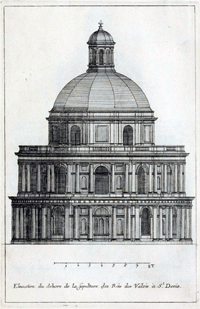SAINT-DENIS
From the South Transept we climb the steps up to the Ambulatory; on the right (south) (effectively in a continuation of the south transept) is the monument to Louis XVI and Marie-Antoinette. We then go around the ambulatory to see monuments that were moved to Saint-Denis from demolished churches during the Revolution, until we come, on the right (north), to the corresponding continuation of the North Transept to view the monuments (not tombs) of Henry II and Catherine de Medici
| Louis XVI & Marie-Antoinette |
 |
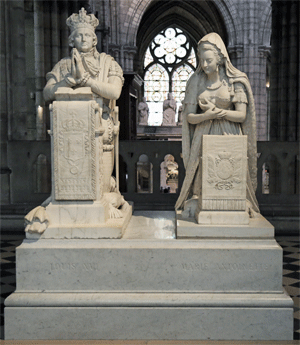 |
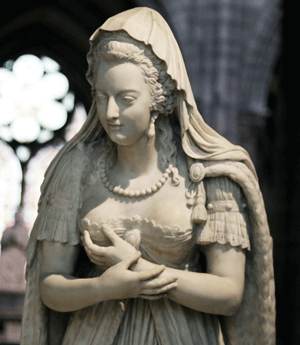 |
King Louis XVI (1743-93). The King and Queen were buried in the Madeleine Cemetery following their execution. In 1815 following the Restoration their remains were brought to Saint-Denis for burial in the crypt. |
Marie-Antoinette ( -1793) These kneeling statues ('orants') were carved by Pierre Petitot and Edme Gaulle between 1816 - 1817 |
 |
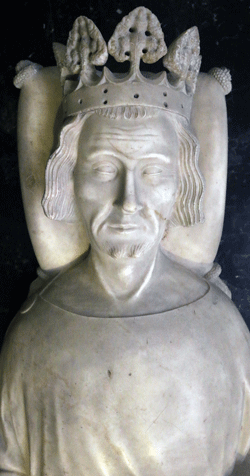 |
  |
 |
||
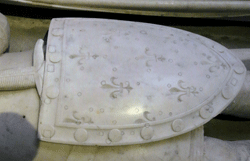 Top:
Blanche of Brittany (1327) This is an uncertain
attribution. Blanche was buried in the Church of the
Jacobins. Right:
Unknown princess;
first half of 14th century. Immediately above: Charles of Valois shield as left |
 |
||||
 |
 |
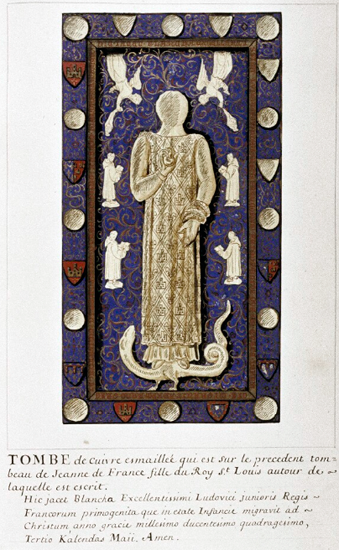 |
 |
||
| Above top:
Blanche of France (1247) Above bottom: Jean of France (1247) Children of Saint Louis and Margaret of Provence Enameled copper. A technique the Limoges specialized in in the 13th century. A rare example. Provenance: Royaumont Abbey Right: Drawings from Gaignières of the tomb of Blanche. Near right is the while structure with the effigy on a tomb chest under an arch; a painting of Blanche is on the back wall of the arch. Far right is a drawing of the enamelled copper effigy: this is labelled Jeanne de France: however the Latin inscription below reads: 'Hic jacet Blancha...' On examination of both the other drawing and the photograph it is clear that this is actually Blanche. Note that the head has been renewed in later times. |
 |
Robert II of Artois (1300 - 1317). Commissioned by his mother, Mahaut, Countess of Artois from Jean Pépin de Huy, 1320. This is said to be the earliest military effigy. Provenance: Church of the Cordeliers, Paris |
| Some Effigies of The Merovingian Dynasty |
 |
 |
 |
|
|
Above top:
Clovis
I (481 - 511)
The conqueror of Gaul and baptized by St Remigius. Founder of
the church in which he was buried. Sculpted around 1220-1230. |
| Henry II & Catherine of Medici |
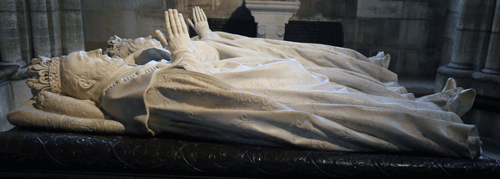 |
 |
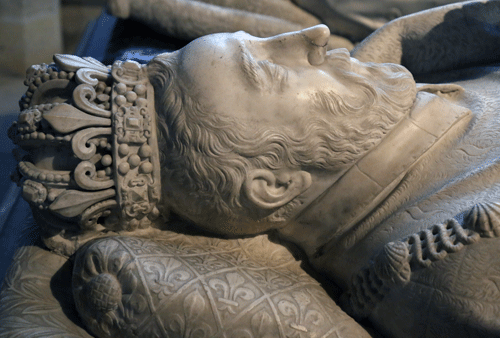 |
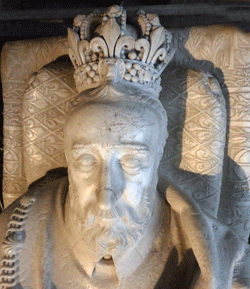 |
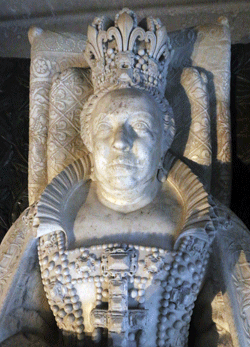 |
 |
Henry II (1519 - 1559) & Catherine of Medici (1519 - 1589) These marble figures show the king and queen in their coronation robes; they lie on bronze beds. By Germain Pilon. This bronze bed was melted down at the Revolution and later reconstructed by Viollet-le-Duc This monument was intended for the Valois Dome (see below) |
 |
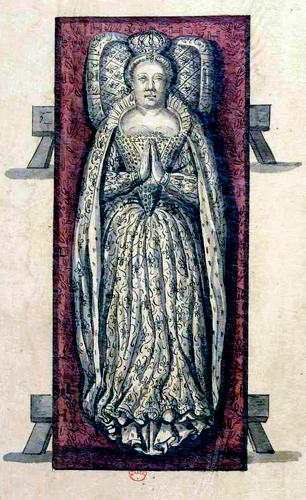 |
|
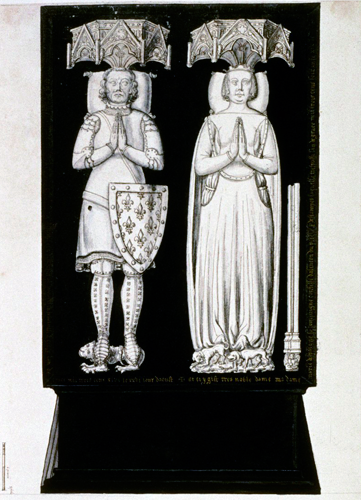 Charles II of Valois and Marie of Spain (see above) |
|||
|
Marie of Bourbon-Vendôme
(1515-1538) Carved
in very fine grain limestone. She was daughter of
Charles de Bourbon and aunt of Henry IV and her body was
placed in the tomb by her sister, the Abbess of
Notre-Dame-de Soissons. Provenance: The Church of the Célestines, Paris, where she was buried |
Catherine of Medici |
